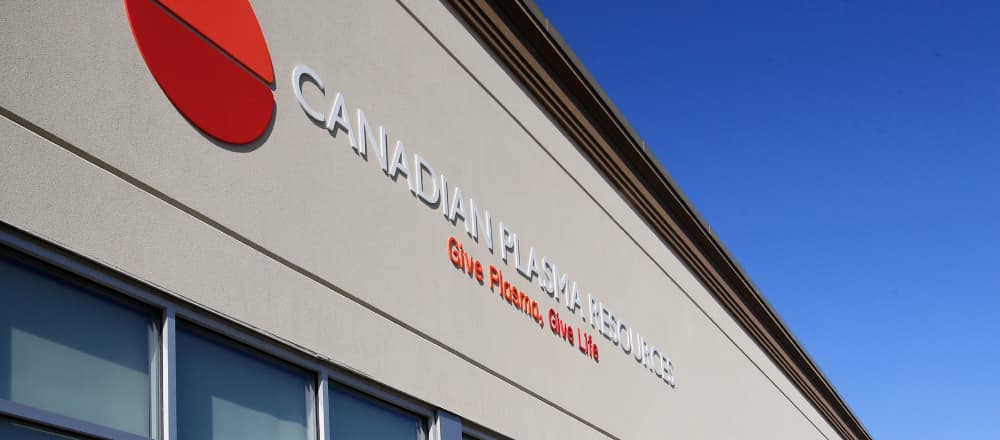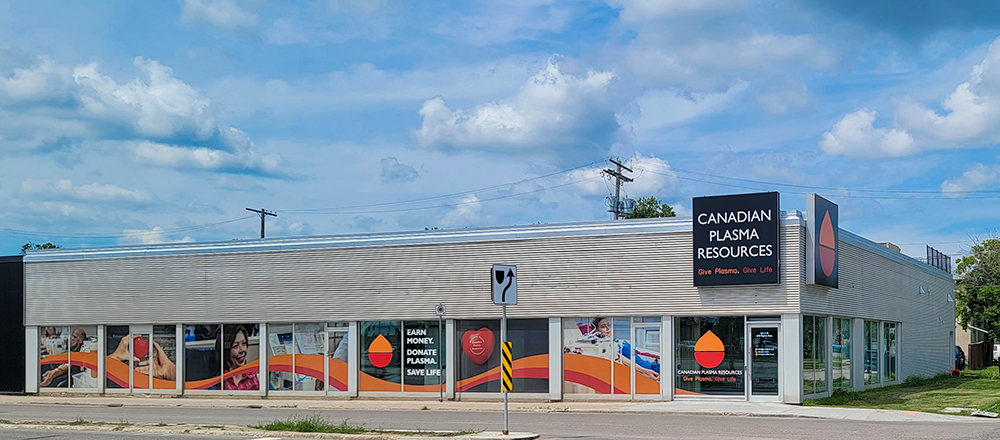Blood Donation VS Plasma Donation: An In-Depth Look
January 23, 2020

Blood donation and plasma donation are both great ways to give back to those in need via bodily components that replenish themselves. Millions of Canadians take the time to give blood and/or plasma every year, but there is still a lot of confusion surrounding the difference between these two types of donations, and understandably so. Even though the process of giving blood and giving plasma are quite similar at first glance, they are vastly different in many other regards. In today’s blog, we’ll be giving you an in-depth look into all things blood donation VS plasma donation.
The Difference Between Blood and Plasma
The major differences between blood donation and plasma donation stem from what these fluids are composed of and the purpose they serve in the human body. Here are some distinguishing features of blood VS plasma:
- Whole Blood: This red bodily fluid is composed of red cells, white cells, plasma, and platelets. It supplies oxygen and essential nutrients to cells and tissues in the body and removes waste materials like carbon dioxide and lactic acid.
- Plasma: Plasma is the clear, straw-coloured liquid component found in blood. It is made up of 90% water and carries nutrients, minerals, hormones, and proteins to parts of the body that need it. Plasma also contains antibodies that help fight infections and proteins including albumin and fibrinogen that help maintain serum osmotic pressure.
The Blood Donation Process VS The Plasma Donation Process
Whole blood donations involve cleansing an area on the donor’s arm, inserting a sterile needle, and drawing blood. Typically blood donation entails the collection of a pint of blood, which takes about 8-10 minutes to collect. Once donation is complete, a bandage is placed on the donor’s arm and they are given time to recuperate.
The plasma donation process and whole blood donation process are similar in that they both involve the cleansing of a donor’s arm and the insertion of a sterile needle; however, plasma is collected through a process known as plasmapheresis. Plasmapheresis is a method of removing and separating plasma from whole blood via an apheresis machine. This automated process takes about 50 minutes to complete.
Uses
Whole blood is commonly transfused in its original form in an effort to treat injuries and illnesses. It can be also be separated into its individual components and used to treat conditions including cancer and blood disorders.
Plasma, on the other hand, is typically used as a starting material to manufacture commercial drugs known as plasma products. These plasma products serve as lifesaving therapies for patients living with immune deficiencies and autoimmune diseases.
Compensation
In Canada, donors are not compensated for their blood donations, but they may or may not be compensated for plasma donations, depending on whether the jurisdiction they’re located in has approved of paid plasma donations.
Thankfully, at Canadian Plasma Resources, we are able to compensate our plasma donors at our Saskatoon and Moncton centres. Being able to offer paid plasma donations is important to us as it allows us to show our appreciation to donors and ensures a secure and safe supply of plasma for patients that need it.
Evidently, while blood donation and plasma donation do have their similarities, they are, in fact, more different than they are similar. At Canadian Plasma Resources, we pride ourselves on collecting high-quality plasma from healthy donors that is then used to manufacture lifesaving and life-changing therapies. Book your next appointment to contribute to a good cause and get compensated for it.









